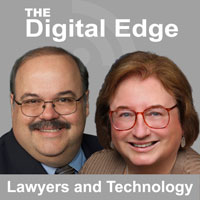Company News
Sensei Officers Featured In Attorney At Work
September 28, 2021
Lawyer Tech Tips: Collaboration Tools by Joan Feldman and Joy White featured Sensei’s Sharon Nelson, John Simek, and Michael Maschke’s tech tips on Microsoft Teams.
Excerpt:
Even for the smallest firms, effective collaboration is critical. Nowadays there are lots of tools and product features touted for the purpose — whether video, chat, shared workspaces, digital conferencing or the like. But we’re wondering about the particular needs of smaller firms, which often means lower-cost tools. So, we asked the experts to share some favorite tech tools and tips to help lawyers communicate and collaborate more effectively mid-pandemic — and beyond.
Michael Maschke, Sharon Nelson and John Simek: Level Up with Teams’ Features
Microsoft Teams is more than a communication platform — as Juda points out above, it’s an effective collaboration tool. Teams is included in most Microsoft 365 business subscriptions, and there is also a free version for those users who haven’t migrated to 365.
Thought of as a competitor to Slack, Teams offers workspace chat rooms, videoconferencing, and file storage and sharing. It’s quickly becoming a powerful all-in-one business tool.
How can lawyers take full advantage of its collaboration features?
Here are some useful tips for lawyers:
- Create a channel to focus on your content where users can share documents, comments and chats related to the task at hand. The General Channel should be used for announcements and other generic information. Channels can be shared with co-workers or with users outside of the firm.
- You can add tabs to channels to help keep areas of focus and tools separate within the channel. Apps can be added to channels as well.
- If users Cc: the channel on an email message, the channel will put the email in the conversation. That saves time not having to sort through emails from channel participants in Outlook.
- When creating a channel, Microsoft Teams also creates a corresponding folder in SharePoint. Users can create subfolders inside of channel folders, to help keep documents organized. We recommend uploading documents to the appropriate subfolder before sharing the link. If users share the document to the channel before uploading, it is placed in the root of the channel folder by default and not in a subfolder. Users can see recent documents in the Files menu option, regardless of where they were accessed.
- Files open as read-only so users need to click on the Edit button to make changes to the document. Users may edit the document simultaneously and will see changes in real-time, including version history tracking. The document saves automatically. Comments are stored with the document and appear regardless of how or where the document is opened. Conversation is a feature of Teams and is only visible within Teams.
- Users can get someone’s attention (individual, group, channel) by using the @ symbol followed by the name. Users can mark a message as important as well.
- Calendar displays your Outlook calendar, along with any shared calendars from Teams. Users can schedule meetings or initiate a Teams call from this window.
More firms are using Microsoft Teams for collaboration and are seeing an increase in engagement and productivity. If your firm is still using outdated processes for collaboration, especially email, it’s time to make the switch to Microsoft Teams.

